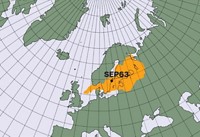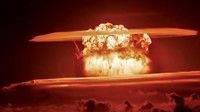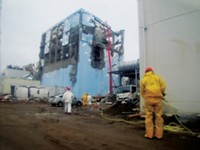Advertisement
Grab your lab coat. Let's get started
Welcome!
Welcome!
Create an account below to get 6 C&EN articles per month, receive newsletters and more - all free.
It seems this is your first time logging in online. Please enter the following information to continue.
As an ACS member you automatically get access to this site. All we need is few more details to create your reading experience.
Not you? Sign in with a different account.
Not you? Sign in with a different account.
ERROR 1
ERROR 1
ERROR 2
ERROR 2
ERROR 2
ERROR 2
ERROR 2
Password and Confirm password must match.
If you have an ACS member number, please enter it here so we can link this account to your membership. (optional)
ERROR 2
ACS values your privacy. By submitting your information, you are gaining access to C&EN and subscribing to our weekly newsletter. We use the information you provide to make your reading experience better, and we will never sell your data to third party members.
Environment
Scientists Estimate Radiation Doses To Wildlife Near Fukushima
Nuclear Disaster: Animals and plants near the Japanese nuclear plant may have received unsafe doses
by Charlie Schmidt
May 31, 2011

Two months after a magnitude 9.0 earthquake triggered a nuclear crisis in Japan, French scientists report that wildlife near the stricken power plant may have received radiation doses that far exceed safe levels for sensitive species (Environ. Sci. Technol., DOI: 10.1021/es201637c).
The analysis, conducted by Jacqueline Garnier-Laplace and colleagues from the French Institute of Radioprotection and Nuclear Safety, is the first assessment of the ecological consequences from the nuclear disaster at the Fukushima Daiichi Nuclear Power Station.
Garnier-Laplace and her colleagues reconstructed radiation doses for wildlife near the plant based on radioactivity measurements made by Japanese researchers on March 31 of three radioisotopes: cesium-134, cesium-137, and iodine-131. A radiation dose, measured in milligrays (mGy), is the amount of energy that an organism absorbs from the decay of radioactive material.
The dose that an organism can tolerate varies significantly between species, Garnier-Laplace says: In general, invertebrates can withstand radiation doses that are 100,000 times greater than most vertebrates can. In an earlier study, she and her research team used data from published field studies to determine that 0.24 mGy per day is the highest dose rate that most terrestrial and marine ecosystems can endure. Above that rate, sensitive species begin to die.
To estimate how leaking radiation at Fukushima affected terrestrial animals and plants, the team analyzed data collected from Iitate Village, located about 20 miles northwest of the plant, where some of the highest radiation levels were detected in March. The scientists also calculated doses for marine ecosystems. They used seawater sampling data gathered from a site roughly 200 feet offshore of the plant. In both cases, they calculated exposure dose rates using standard modeling software that incorporates radioactivity data with assumptions about the physiology of exposed organisms, such as their rate of uptake of radioisotopes.
Near Iitate, the researchers calculated that dose rates among plants, birds, rodents, and soil invertebrates ranged from 2 to 20 mGy/day, as much as 80 times greater than the threshold dose. Marine doses were even higher, ranging from 210 to 4,600 mGy/day.
But Garnier-Laplace cautions that the analysis has a high degree of uncertainty, in part because sampling data was available only for a few radioisotopes. Moreover, her coauthor, Thomas Hinton, deputy director of the French nuclear safety institute, points out that despite the estimated high dose rates, scientists may have a hard time detecting any ecological effects of the radiation. That's because scientists lack a good understanding of species population sizes before the accident, he says, and because the radioisotopes will slowly dilute.
Nick Beresford, a radioecologist at the Centre for Ecology & Hydrology, in Lancaster, U.K., says the study's conclusions, while based on limited data, appear reasonable. He says scientists have had few opportunities to study how nuclear accidents affect wildlife: "There's still a lot of debate over the consequences from Chernobyl and that's largely because we didn't get in there quickly enough." While Japanese officials understandably have focused on human safety at Fukushima, he adds, the incident is "also a research opportunity that we can't afford to squander."





Join the conversation
Contact the reporter
Submit a Letter to the Editor for publication
Engage with us on Twitter